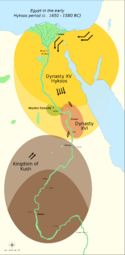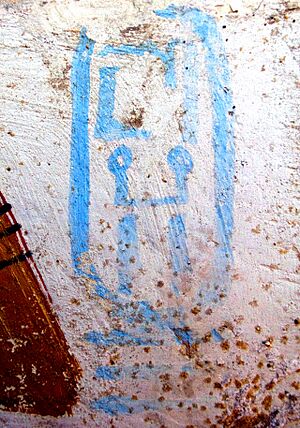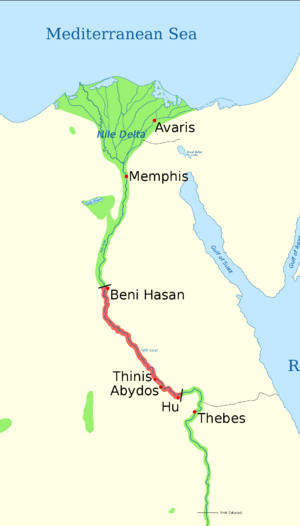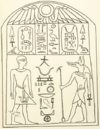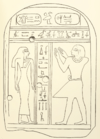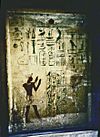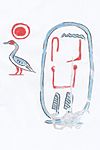Abydos Dynasty facts for kids
Quick facts for kids
Abydos Dynasty
|
|||||||||||
|---|---|---|---|---|---|---|---|---|---|---|---|
| c. 1650 BC–c. 1600 BC | |||||||||||
|
Map of Egypt during the Fifteenth, Abydos, and Sixteenth Dynasties
|
|||||||||||
| Capital | Abydos | ||||||||||
| Common languages | Egyptian language | ||||||||||
| Religion | Ancient Egyptian religion | ||||||||||
| Government | Absolute monarchy | ||||||||||
| Historical era | Bronze Age | ||||||||||
|
• Established
|
c. 1650 BC | ||||||||||
|
• Disestablished
|
c. 1600 BC | ||||||||||
|
|||||||||||
The Abydos Dynasty was a group of rulers who might have controlled parts of ancient Egypt for a short time. They lived during a period called the Second Intermediate Period. This was around 1650 to 1600 BC. During this time, other groups of rulers, like the Fifteenth and Sixteenth Dynasties, also ruled different parts of Egypt.
Historians believe the Abydos Dynasty was based in or near the city of Abydos. Their royal burial ground might have been at the foot of a hill called the Mountain of Anubis. This hill looked like a pyramid. It was close to a rock-cut tomb built for the pharaoh Senusret III.
Contents
Was There an Abydos Dynasty?
Historians and archaeologists often debate if the Abydos Dynasty truly existed. Let's look at the evidence.
Why Some Think It Existed
The idea of an Abydos Dynasty was first suggested by Detlef Franke. Later, Kim Ryholt explained it more in 1997. Ryholt noticed that two kings from this time had names linked to Abydos. These kings were Wepwawetemsaf and Pantjeny.
- Wepwawetemsaf's name means "Wepwawet is his protection." Wepwawet was an important god in Abydos.
- Pantjeny's name means "He of Thinis." Thinis was a major city near Abydos.
Also, stone tablets called stelae belonging to Wepwawetemsaf, Pantjeny, and another king named Snaaib were found in Abydos. Finding their stelae there might mean Abydos was their main city.
Ryholt also thinks that an Abydos Dynasty could explain 16 missing entries in an ancient list of kings called the Turin Canon. This dynasty might have started after the 13th Dynasty fell. This happened when the Hyksos people took over the city of Memphis.
In 2014, archaeologists found the tomb of a king named Senebkay in Abydos. This area was known as "Anubis Mountain" long ago. If Senebkay was part of the Abydos Dynasty, his tomb could be part of their royal burial ground. It was found next to tombs of rulers from the Middle Kingdom. Since then, eight more royal tombs from this period have been found. They are similar to Senebkay's tomb.
Why Some Are Not Sure
Not all experts agree that the Abydos Dynasty existed. Marcel Marėe, for example, points out something interesting. A workshop in Abydos made stelae for kings like Pantjeny and Wepwawetemsaf. This same workshop also likely made a stela for Rahotep of the 17th Dynasty.
Marėe thinks it's unlikely that one workshop would make items for two enemy dynasties. However, it's not clear if these dynasties were enemies or if they ruled at different times. For instance, Ryholt believes they were separated by about 20 years.
Alexander Ilin-Tomich also questions the idea based on Senebkay's tomb. He notes that other pharaohs, like Senusret III and Sobekhotep IV, also had tombs in Abydos. But no one says these kings belonged to an Abydos-based dynasty. He wonders if Senebkay might have been a king of the 16th Dynasty from Thebes.
Where They Might Have Ruled
If the Abydos Dynasty was real, its main city would likely have been Abydos or Thinis. A carving, or graffito, believed to be by King Wepwawetemsaf was found far north of Abydos. It was in a tomb at Beni Hasan, about 250 km away.
If this carving is truly from Wepwawetemsaf and he was an Abydos Dynasty king, then their territory might have stretched that far north. However, since they lived at the same time as the 16th Dynasty, their control probably didn't go much farther south than Hu. This city is about 50 km south of Abydos.
Possible Rulers
Kim Ryholt believes the following 16 entries from the Turin Canon might belong to the Abydos Dynasty:
| King's Name | Entry in Turin Canon | Original Writing |
|---|---|---|
| Woser[...]re | Col 11. Line 16 | Wsr-[...]-Rˁ |
| Woser[...]re | Col 11. Line 17 | Wsr-[...]-Rˁ |
| Eight kings missing | Col 11. Lines 18-25 | |
| [...]hebre | Col 11. Line 26 | [...]-hb-[Rˁ] |
| Three kings missing | Col 11. Lines 27-29 | |
| [...]hebre (not certain) | Col 11. Line 30 | [...]-ḥb-[Rˁ] |
| [...]webenre | Col 11. Line 31 | [...]-wbn-[Rˁ] |
Some of these rulers might be the same as the four kings listed below. These four kings are thought to be from the Abydos Dynasty, but we don't know their exact order:
| King's Name | Image | Notes |
|---|---|---|
| Sekhemraneferkhau Wepwawetemsaf | Might belong to the late 16th Dynasty. | |
| Sekhemrekhutawy Pantjeny | Might belong to the late 16th Dynasty. | |
| Menkhaure Snaaib | Might belong to the late 13th Dynasty. | |
| Woseribre Senebkay | Could be one of the Woser[...]re kings from the Turin Canon. | |
| Khuiqer | His reign date is uncertain. Detlef Franke linked him to the Abydos Dynasty. |


